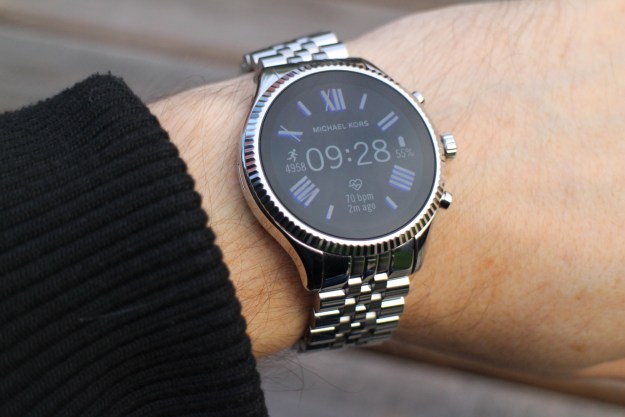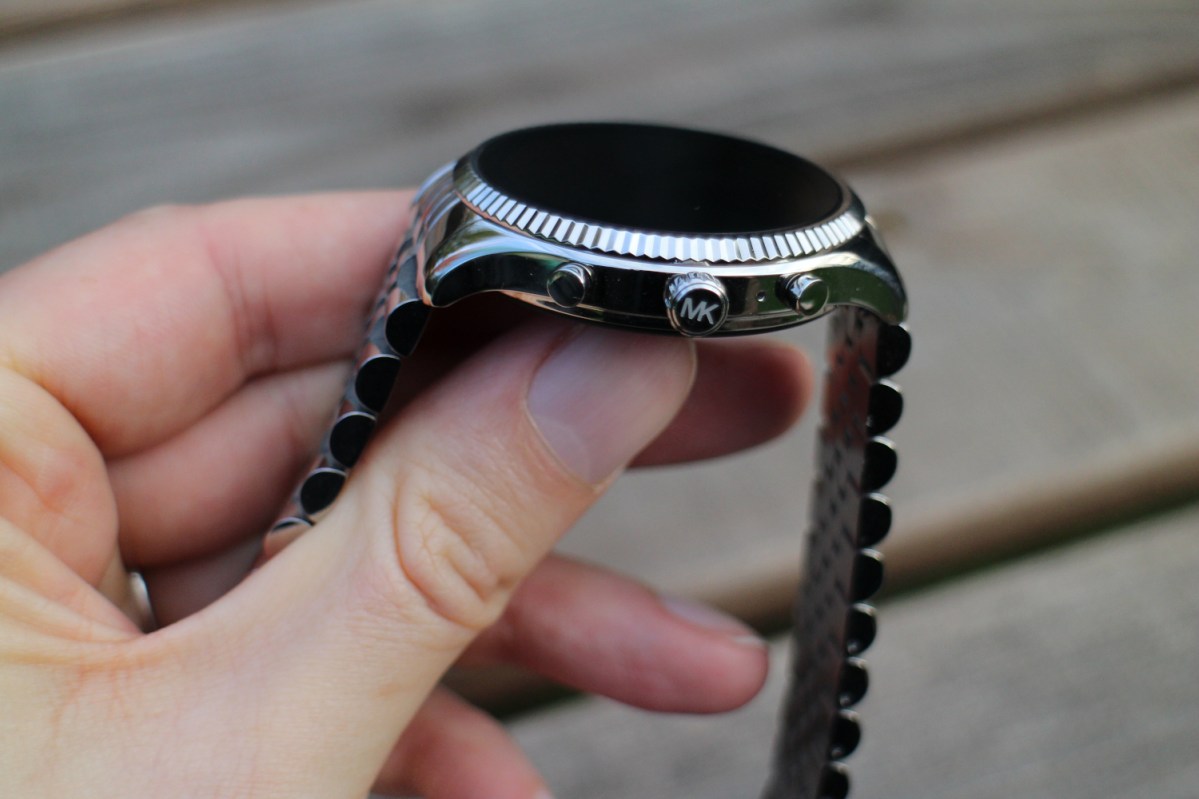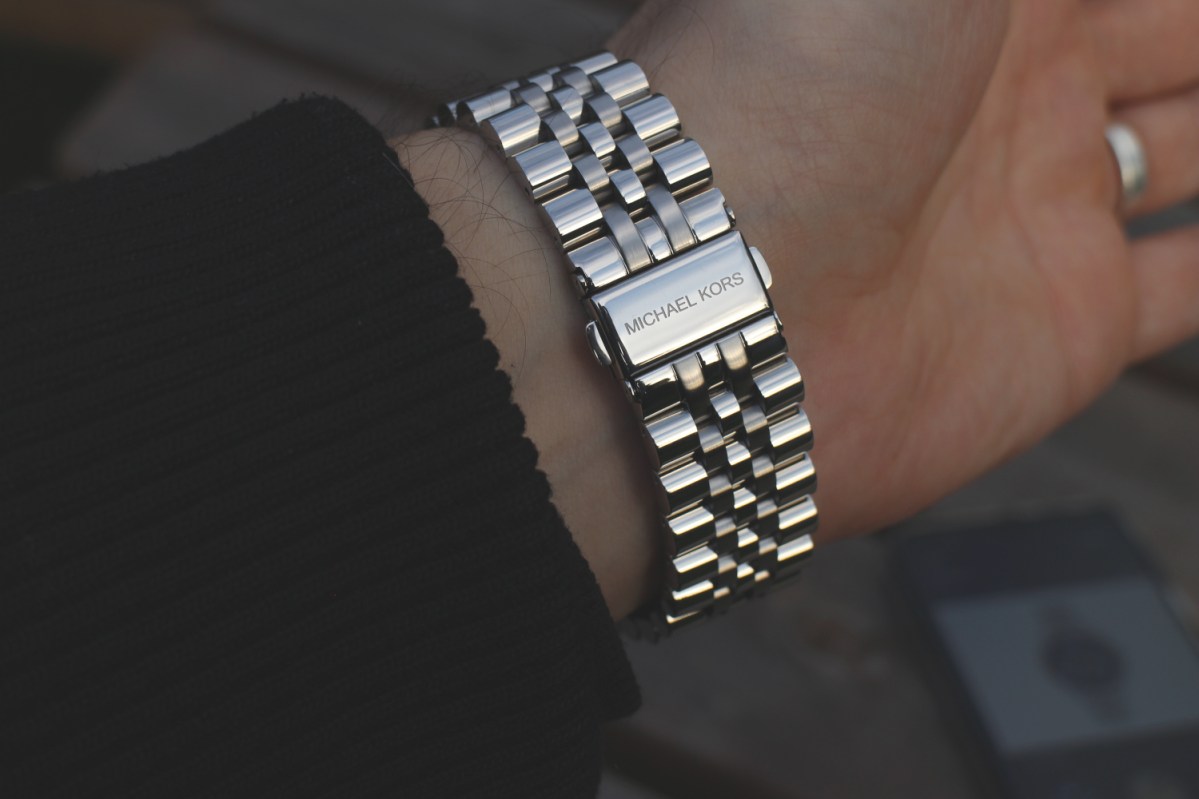
“The Michael Kors Lexington 2 is a stylish smartwatch let down by Wear OS.”
- Stylish, branded design
- Support for Google Pay
- Heart rate monitor
- Built-in GPS
- Wear OS isn't great
- Weak battery life
- Expensive
It may have a shiny, stylish exterior, and an impressive-sounding name, but underneath the Michael Kors Access Lexington 2 is just another Wear OS smartwatch. Googles smartwatch platform has had issues from its inception five years ago, and little has been done to elevate the experience. Manufacturers like Samsung have abandoned the platform and it seems even Google doesn’t want to make a Wear OS smartwatch.
Wear OS has survived because fashion brands have adopted it, putting out smartwatches that have exactly the same guts, but come wrapped in different stylish exteriors that make you want to wear it.
The Fossil Group, which has multiple lines of Wear OS smartwatches (including licensed devices from brands like Michael Kors, Kate Spade, and Diesel) does well to make fine-looking watches, but can’t do much about their lackluster smarts.
Shiny, chunky, and stylish
The last smartwatch I wore by choice was the Fossil Q Explorist and the Michael Kors Access Lexington 2 has quite a lot in common with it. At first glance it has a fairly similar chunky, generic design, but the Lexington 2 is more refined and elegant. The raised bezel around the watch face is finely chiseled and the crown has a matching texture, along with the MK logo engraved in it.
The other two buttons on this 44 mm case are smooth, but the crown and bezel give it a bit of distinction and flare. The strap is elegant and has a clasp bearing the Michael Kors name. There’s also another branded band in the box, in case you want to switch to a notched strap.

My unit is the silver stainless steel version, but there’s also gold, rose gold, and a tri-tone finish that mixes all three. You also have more expensive options with ostentatious diamond-like accents. I prefer a plain, understated look, so the silver is my pick. I find it goes well with casual outfits, but it’s also flashy enough to pair with a suit in the office or a night out on the town. It’s a standard, classic design, but that also means it doesn’t stand out or have a clear identity; you wouldn’t really know it was a Michael Kors watch without all the logos reminding you.
The 1.28-inch AMOLED display has a resolution of 328 pixels-per-inch, which makes it nice and sharp. It’s perfectly legible indoors, but the brightness is limited so you’ll need to shield the screen to see it in direct sunlight.
Wear OS just isn’t very good
While I appreciate the look of the Lexington 2, I was most interested to see what kind of difference 1 GB
If only Google could bring the slickness and smarts of its

During setup the watch failed to connect a couple of times, then suddenly worked without explanation. I decided to dip into the Play Store, which you can do on your wrist, and see which apps are offered. Sadly, the Lexington 2 had other ideas, preferring to hang indefinitely on the loading screen and then dump me back to my watch face as though nothing had happened. This happened a few times in the last couple of weeks, and although it usually worked properly the next time, it’s frustrating to have it fail at first, and do so frequently.
After pairing your watch with your phone you can use the mobile app to choose watch faces, decide which notifications should go through, set up Tiles, and tweak a few other bits and pieces. You can also tap and hold on the watch screen to change its faces, but it’s easier and a lot quicker to do so on your phone. Pressing the crown opens your list of apps, with those recently used at the top. By default the top button launches a menu which prompts you to set up different watch face configurations and add your social media accounts. The bottom button is set to open Google Fit.
Most of your navigation is done through swipes on the screen. If you opt for the always-on watch face then you’ll have to tap the screen to bring it to life before you start swiping; just raising your wrist won’t enable the touchscreen, but only brightens it. Swipe down from the top for quick settings and a handy shortcut to the full settings menu. Swipe up from the bottom and you get notifications from incoming alerts or fitness goals. Left to right, gives you Google Assistant. Right to left opens your Tiles, which show your Google Fit stats for the day, the weather report, and your calendar events; you can add and remove whatever tiles you want.

The touchscreen was often less than responsive, but I couldn’t figure out if it’s the screen or the software causing all the delays and missed touches. I’m glad you can scroll by turning the crown, because trying to swipe to read an email, especially with the spotty touch experience, is rather cumbersome. The Lexington 2 should have ample power to perform, but I found apps were often slow to load and too many things simply failed to work the first time I tried them.
There aren’t many apps for Wear OS; the app store is taken up mostly by watch faces, messenger clients, or
Google Pay is very handy to have on your wrist, especially when paying for public transit where it’s always busy and you want to be quick. It’s nice to have
Full-featured hardware
The Access Lexington 2 is a full-featured smartwatch, aside from its Wear OS shortcomings. You have
For a casual exerciser like myself the Lexington 2 ticks all the boxes. Google Fit is very straightforward, giving you a target for active minutes and “heart points.” Many of the watch faces for the Lexington 2 also display your step count for the day, so it’s easy to keep track if you’re shooting for the standard 10,000.

If you’re willing to share your data with Google, you can also get calories burned estimates and distance covered stats. There are some guided breathing exercises, too, and they can prove handy if you’re feeling stressed and want to take a couple of minutes to relax. The heart rate monitor seems to be pretty accurate, though if you opt to use it for 24-hour monitoring you’re going to notice the impact on battery life.
There are quite a few pre-installed apps on the Michael Kors Access Lexington 2 including Cardiogram, Nike Run Club, and Spotify. Luckily, the watch comes with a fairly generous 8GB of storage space.
Day-long battery life

The Lexington 2 is rated for up to 36 hours of battery life, but I never got close to that with regular usage. If you plan to use features like the GPS and the heart rate monitor, or you get a decent number of notifications in a day, then you’ll need to charge the watch up every night. The watch does have some battery modes that help to extend its battery life beyond other non-Fossil group Wear OS watches, though. If I hardly use it, turn off most notifications, and don’t have the heart rate monitor run automatically from time to time, then the Lexington 2 might get closer to two days.
It’s quite fast to charge up, so if you forget overnight, then you can get a useful amount of charge in the morning. I was able to get about 30% charge in 30 minutes.
Price, availability, and warranty
You can buy the Michael Kors Access Lexington 2 directly from the Michael Kors website for $350. If you fancy the flashier option with crystals set into the central band of the watch strap that’ll cost you $395 — $425 if you’d like the entire watch covered. It comes with a two-year warranty which stipulates that a covered component will be repaired or the watch will be replaced free of charge with the same or a comparable product if it proves to be defective in material or workmanship under normal use.
Our take
The Michael Kors Access Lexington 2 is another in a long line of Wear OS smartwatches. It has a classic, stylish design and it’s packing in a lot of features, but it’s relatively expensive and Wear OS lets it down. When it works, it’s great having Google services on your wrist, but all too often little things inexplicably don’t work or require multiple attempts; it’s frustrating.
Are there any alternatives?
If you’re an iPhone user looking for more than a timepiece with notifications and Google services, then do yourself a favor and get the latest Apple Watch — it’s better in every way, though it starts from $400. If you have an Android phone, then the Samsung Galaxy Watch Active 2 is a better option for a smartwatch experience, offering deeper fitness tracking features, more third-party app integrations, and a better overall user experience for $280.
We have a bunch of other suggestions that will suit different people in our best smartwatches roundup.
How long will it last?
With water resistance up to 30 meters and durable stainless steel construction, this smartwatch should last you a couple of years; after which battery life may be degraded noticeably. The other concern is the software. The Lexington 2 should continue to get software updates for a bit, but how long isn’t clear.
Should you buy one?
Yes, if you’re a fan of Wear OS, the Lexington Access 2 puts it in an elegant package.
Editors' Recommendations
- This is the OnePlus Watch 2, and it looks incredible
- Michael Kors’ three new Wear OS smartwatches are stylish and heavy on features


